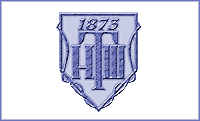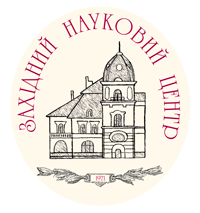Oleksandr POZHARYTSKYI, Olena PESAROGLO
Odesa State Agrarian University Kanatna St., 99, 65000 Odesa, Ukraine e-mail: alexpyros01@gmail.com
DOI: https://doi.org/10.37827/ntsh.chem.2025.78.166
GERMANIUM(IV) COORDINATION COMPOUNDS WITH BIOLOGICAL ACTIVITY
Water-soluble germanium compounds, including both inorganic and coordination compounds have attracted considerable scientific and pharmaceutical attention in recent decades due to their wide range of biological activities. Among these, organic germanium derivatives have become particularly prominent in the development of novel therapeutic agents. These compounds are currently used in medical practice for their antitumor, antiviral, anti-inflammatory, and antibacterial properties. Furthermore, they serve as antioxidants and immunoregulators, contributing to the treatment and prevention of various diseases. There is growing evidence suggesting their influence on vital metabolic processes, including the functioning of the hematopoietic system, the regulation of oxygen-dependent mechanisms, and lipid metabolism, especially under pathological conditions such as diabetes mellitus. In addition, the ability of germanium compounds to act as free radical scavengers underscores their potential role in combating oxidative stress. This review provides a comprehensive overview of studies conducted over the past twenty years, focusing on the medical application of not only water-soluble organic germanium compounds but also inorganic and coordination compounds of germanium. Special attention is given to bioactive coordination germanium (IV) compounds with ligands of organic origin. The review summarizes the findings on various types of these compounds, including monoligand and heteroligand complexes formed with ambidentate nitrogen- and oxygen-containing molecules, as well as heterometallic coordination compounds involving Ge (IV). Their structural features, synthesis methods, and physicochemical properties are discussed in detail. Finally, the review analyzes current trends and future directions in the search for and development of new biologically active substances with a broad spectrum of pharmacological activity, based on coordination compounds of germanium.
Keywords: germanium, coordination compounds, bioligands, biological activity, application of germanium compounds.
References:
-
1. Luo X., Sun J., Kong D., Lei Y., Gong F., Zhang T., Shen Z., Wang K., Luo H., Xu Y. The role of germanium in
diseases: exploring its important biological effects. J Transl Med. 2023.Vol. 21(1). P. 795.
(https://doi.org/10.1186/s12967-023-04643-0).
2. Fedoruk R.S., Kovalchuk I.I., Mezentseva L.M., Tesarivska U.I., Pylypets A.Z., Kaplunenko V.H. Germanium
compounds and their role in animal body. The Animal Biology. 2022. Vol. 24(1). P. 50–60. (in Ukrainian).
https://doi.org/10.15407/animbiol24.01.050.
3. Singh R. V., Gupta P., Chaudhary P., Deshmukh C.N. Coordination compounds of germanium(IV) formed with soft and
hard donor atoms: A look into the past and present. Work main group metal chemistry. 2005. Vol. 28(2). P. 93–118.
https://doi.org/10.1515/MGMC.2005.28.2.93.
4. Levason W., Reid G., Zhang W. Coordination complexes of silicon and germanium halides with neutral ligands.
Coordination Chemistry Reviews. 2011. Vol. 255(11–12). Р. 1319–1341. https://doi.org/10.1016/j.ccr.2010.11.019.
5. Seifullina I.I. New page in coordination chemistry of germanium. Odesa National University Herald. Chemistry.
2003.Vol. 8(3). P. 8–25 (in Russian).
6. Gudzenko O., Borzova N., Varbanets L., Seifullina I., Martsinko О., Chebanenko О. Germanium (IV) сomplexes with
gluconicacid as effectors of penicillium tardum and eupenicillium erubescens α-L-Rhamnosidases. Mikrobiolohichnyi
Zhurnal. 2023. Vol. 85(4). P. 58 – 65. https://doi.org/10.15407/microbiolj85.04.058.
7. Mertens R.T., Parkin S., & Awuah S.G. Exploring six-coordinate germanium(IV)-diketonate complexes as anticancer
agents. Inorganica Chim. Acta. 2020. Vol. 503(1). 119375. http://doi:10.1016/j.ica.2019.119375.
8. Seifullina I.I., Martsinko E.E., Afanasenko E.V. Design and synthesis of new homo- and heterometal coordination
compounds of germanium(IV) for preparation of low toxic drugs with a wide therapeutic action. Odesa National
University Herald. Chemistry. 2015. Vol. 20(4(56), P. 6–17. https://doi.org/10.18524/2304-0947.2015.4(56).56690.
9. Menchikov L.G., Popov A.V. Physiological Activity of Trace Element Germanium including Anticancer Properties.
Biomedicines. 2023. Vol. 11(6) Р. 1535. https://doi.org/10.3390/biomedicines11061535.
10. Seifullina I.I., Martsinko E.E., Khristova N.M., Chebanenko E.A. Molecular complexes of germanium
tetrachloride with niacin, nicotinic amide, isonicotinic hydrazide and their pharmacological actions. Odesa
National University Herald. Chemistry. 2016. Vol. 21(2). Р. 18–28. (in Russian).
https://doi.org/10.18524/2304-0947.
11. Martyniuk M. A., Martsynko O. E. Synthesis and research of coordination compounds of germanium(IV) with gallic
acid and ethyl gallate. Odesa National University Herald. Chemistry. 2024. Vol. 29(2(88). P. 29–36.
https://doi.org/10.18524/2304-0947.2024.2(88).322127.
12. Kadomtseva A.V., Mochalov G.M., Zasovskaya M.A., Ob’edkov A.M. Synthesis, Structure, and Biological Activity
of the Germanium Dioxide Complex Compound with 2-Amino-3-Hydroxybutanoic Acid. Inorganics. 2024. Vol. 12. Р. 83.
https://doi.org/10.3390/inorganics12030083.
13. Zhai G., Zhu W., Duan Y., Qu W., Yan Z. Synthesis, characterization and antitumor activity of the
germanium-quercetin complex. Main Group Met. Chem. 2012. Vol. 35(3–4). Р. 103–109.
https://doi.org/10.1515/mgmc-2012-0026.
14. Bukhtiarova Т.А., Bobkova L.S., Lukjanchuk V.D., Seifullina I.J., Martsynko O.E. Pharmaco-mathematical
analysis of the structure-activity relationship of germanium coordination compounds under the crush syndrome.
Pharmacology and Drug Toxicology. 2019. Vol. 13(3). Р. 175–186. (in Ukrainian).
https://doi.org/10.33250/13.03.175.
15. Wada T., Hanyu T., Nozaki K., Kataoka K., Kawatani T., Asahi T., Sawamura N. Antioxidant activity of Ge-132, a
synthetic organic germanium, on cultured mammalian cells. Biol Pharm Bull. 2018. Vol. 41(5). P. 749–753.
https://doi.org/10.1248/bpb.b17-00949.
16. Rozhkovskyi Y. Effects of germanium organic compound and α-lipoic acid on STZ-induced diabetes manifestations
in rats. Regulatory Mechanisms in Biosystems. 2024. Vol. 15(4). P. 962 969. https://doi.org/10.15421/0224141.
17. Aizawa K., Nakamura T., Shimada Y., Takeda T., Azumi J., Shore A.C. Organogermanium: Potential beneficial
effects on the cardiovascular system. Physiol Rep. 2025. Vol. 13(3). P. e70234.
https://doi.org/10.14814/phy2.70234.
18. Takeda T, Azumi J, Masaki M, Nagasawa T, Shimada Y, Aso H, Nakamura T. Organogermanium, Ge-132, promotes the
clearance of senescent red blood cells via macrophage-mediated phagocyte activation. Heliyon. 2023. Vol. 10(1). Р.
e23296. https://doi.org/10.1016/j.heliyon.2023.e23296.
19. Matyushkina M.V., Shemonayeva K.F., Rozhkovsky Y.V., Kirilyuk А.О. The effect of (Mg, Co) bis (citrate)
germanates on morphological changes in brain tissue. Scientific Bulletin of Uzhhorod University. Series: Medicine.
2022. Vol. 2(66). P. 155–159. (in Ukrainian). https://doi.org/10.32782/2415-8127.2022.66.30.
20. Martsynko O., Seifullina I, FinikО., Tsymbaliuk K. Structure features and pharmacological properties of
germanium(IV) complexes with 1-hydroxyethane-1,1-diphosphonic acid. Ukr. Chem. J. 2024. Vol. 90(9). Р. 20–30.
https://doi.org/10.33609/2708-129X.90.9.2024.19-30.
21. Yadlovskyi O.E., Martsynko O.E., Lukyanchuk V.D., Seifullina I.Y. Primary screening of new non-steroid
anti-inflammatory drugs in the line of original biometallicdihydroxo-μ-bis(gluconato)digermanates(IV).
Pharmacology and Drug Toxicology. 2024. Vol. 18 (4). P. 299– 304. (in Ukrainian).
https://doi.org/10.33250/18.04.299.
22. Tsutsui M., Kakimoto N., Axtell D. D., Oikawa H., Asai K. Crystal structure of "carboxyethylgermanium
sesquioxide". J. Am.Chem. Soc. 1976. Vol. 98(25). P. 8287 8289. https://doi.org/10.1021/ja00441a081.
23. Ikemoto K., Kobayashi M., Fukumoto T., Morimatsu M., Pollard R.B., Suzuki F. 2-Carboxyethylgermanium
sesquioxide, a synthetic organogermanium compound, as an inducer of contrasuppressor T cells. Experientia. 1996.
Vol. 52(2). Р. 159 166. https://doi.org/10.1007/BF01923363.
24. Kakimoto N., Miyao K., Akiba M. Synthesis and properties of 2-carboxyethylgermanium sesquioxide (Ge-132) and
related compounds as bioactive organogermanium compound. In "Frontiers of Organogermanium, -Tin, LeadChemistry’',
E. Lukevics, L Ignatovicheds., Latvian Institute of Organic Synthesis. 1993. Р. 319–329.
25. Ge S., Zhao Y., Sui B.,Shangguan G. Studies on the interaction of novel organogermanium sesquioxides with DNA.
Chem. Res. Chin. Univ. 2015. Vol. 31(1). Р. 31–37. https://doi.org/10.1007/s40242-015-4198-z.
26. Shangguan G.Q., Huang L.L., Qu X.G. The synthesis and cytotoxic activity of novel organogermanium sesquioxides
with anthraquinone or naphthalene moiety, Chinese Chemical Letters. 2007. Vol 18(11). P. 1347–1350.
https://doi.org/10.1016/j.cclet.2007.09.029.
27. Zheng J., Yang L., Deng Y., Zhang C., Zhang Y., Xiong S., Ding C., Zhao J., Liao C., Gong D. A review of
public and environmental consequences of organic germanium. Crit. Rev. Environ. Sci. Technol. 2020. Vol. 50. Р.
1384–1409. https://doi.org/10.1080/10643389.2019.1661175.
28. Ye L., Luo Y., Peng X., Zhou Y., Ou X. Synthesis and biological activity of 3-(2, 8,
9-trioxa-aza-1-germatricyclo [3. 3. 3. 0] undecane-1-yl)-caffeic acid. Med. Chem. 2009. Vol. 5(4). Р. 382–384.
https://doi.org/10.2174/157340609788681539.
29. Lim D.H., Li M., Seo J.A., Lim K.M., Ham S.W. A novel organogermanium protected atopic dermatitis induced by
oxazolone. Bioorg. Med. Chem. Lett. 2010. Vol. 20(14). P. 4032–4034. https://doi.org/10.1016/j.bmcl.2010.05.097.
30. Choi S., Oh C., Han J., Park J., Choi J.H., Min N.Y., Lee K.H., Park A.J., Kim Y.J., Jang S.J., Lee D.H., Ham
S.W. Synthesis and biological evaluation of water-soluble organogermanium. Eur. J. Med. Chem. 2010 Vol. 45(4). P.
1654–1656. https://doi.org/10.1016/j.ejmech.2009.12.069.
31. Martsinko E.E., Chebanenko E.A., Seifullina, I.I. Synthesis and structure of heterometallic – mixed-ligand
Ge(IV) – 3d-metal complexes with gallic acid and 1,10-phenanthroline. OdesaNationalUniversityHerald. Chemistry.
2021. Vol. 26(4(80). P. 6–14. (in Ukrainian). https://doi.org/10.18524/2304-0947.2021.4(80).248288.
32. Beldiy M., Pozharytskyi O. The characteristics of the flotation-based extraction of heavy metals from waste
waters by the treatment with carboxylate surfactants. Agrarian Bulletin of the Black Sea Region. Collection of
Scientific Papers. Odesa. 2018. Vol. 88. P. 61–66. (in English).
33. Biver M, Filella M. Stability Constants of Tetravalent Germanium Complexes in Aqueous Solution: Small Organic
Oxygen and Nitrogen Donor Ligands. Inorg Chem. 2024. Vol. 63(5). P. 2470–2485. https:
//doi.org/10.1021/acs.inorgchem.3c03640.
34. Filella M., Rodríguez-Murillo J.C. Germanium in the environment: Current knowledge and identification of gaps.
Soil & Environmental Health. 2025. Vol. 3(2). P. 100132. https://doi.org/10.1016/j.seh.2025.100132.
35. Filella M., May P.M. The aqueous solution chemistry of germanium under conditions of environmental and
biological interest: Inorganic ligands. Applied Geochemistry. 2023. Vol. 155. P. 105631.
https://doi.org/10.1016/j.apgeochem.2023.105631.
36. Seifullina I.I., Martsinko E.E., Kryzhanovskaya O.S., Lozhichevskaya T.V., Savin S.N. Complex compounds of
germanium (IV) On basis of 1-hydroxyethylenediphosphonic acid and their application. Odesa National University
Herald. Chemistry. 2011. Vol. 16(5). P. 67–78. (in Russian). https://doi.org/10.18524/2304-0947.2011.5.37985.
37. Martsinko E. E., Chebanenko E. A., Seifullina I. I., Dyakonenko V. V., Shishkina S. V., Afanasenko E. V.
Synthesis, molecular and crystalline structure of the tartratogermanatic (IV) anion- and trisbipyridineiron cation
(II)-based complex. Odesa National University Herald. Chemistry. 2018. Vol. 23(1(65). Р. 6–15. (in Russian).
https://doi.org/10.18524/2304-0947.2018.1(65).124544.
38. Pechinka D. M., Finik O. A., Pesaroglo O. G., Fadieiev Y.M., Seifullina I.I., Martsynko O.E. Onium
diaminotetracarboxylates of germanium(IV): synthesis, structure, applications. Odesa National University Herald.
Chemistry. 2024. Vol. 29(2(88).P. 37–49. https://doi.org/10.18524/2304-0947.2024.2(88).322128.
39. Varbanets О.I. Influence of new xylarate germanium complexe (IV) with potassium on chronic seizure intensity
inkindling model in mice. Actual Problems of the Modern Medicine: Bulletin of Ukrainian Medical Stomatological
Academy. 2012. Vol. 12(4(40). P. 108–113.(in Ukrainian).
40. Martsinko E.E., Chebanenko E.A., Seifullina I.I., Dyakonenko V.V., Shishkina S.V., Kim J.R., Gromova M.I.
different-ligand complexes of germanium(IV) with mandelic, gallic acids and heterocyclic amines. Odesa National
University Herald. Chemistry. 2018. Vol. 23(3). P. 86–95. (in Ukrainian).
https://doi.org/10.18524/2304-0947.2018.3(67).140803.
41. Seifullina I. I., Pesaroglo A. G., Martsinko E. E., Chebanenko E. A., Pozharytskyi A. F. Synthesis and
structure of magnesium 1-hydroxyethylidene-1,1-diphosphonatogermanate(IV) and its influence on the growth and
development of winter wheat. Odesa National University Herald. Chemistry. 2019. Vol. 24(1). P. 6–13. (in Russian).
https://doi.org/10.18524/2304-0947.2019.1(69).158415 .
42. Pesaroglo O. H., Balan H. O., Pozharytskyi O. P. Study of fungicidal and immunomodulatory activity of
germanium and cobalt complexes on winter wheat. Prychornomoria Agrarian Herald. Collected Scientific Works. Odesa.
2018. Vol. 88. P. 91–98. (in Ukrainian).
How to Cite
POZHARYTSKYI O., PESAROGLO O. GERMANIUM(IV) COORDINATION COMPOUNDS WITH BIOLOGICAL ACTIVITY. Proc. Shevchenko Sci. Soc. Chem. Sci. 2025. Vol. 78. P. 166-181.

